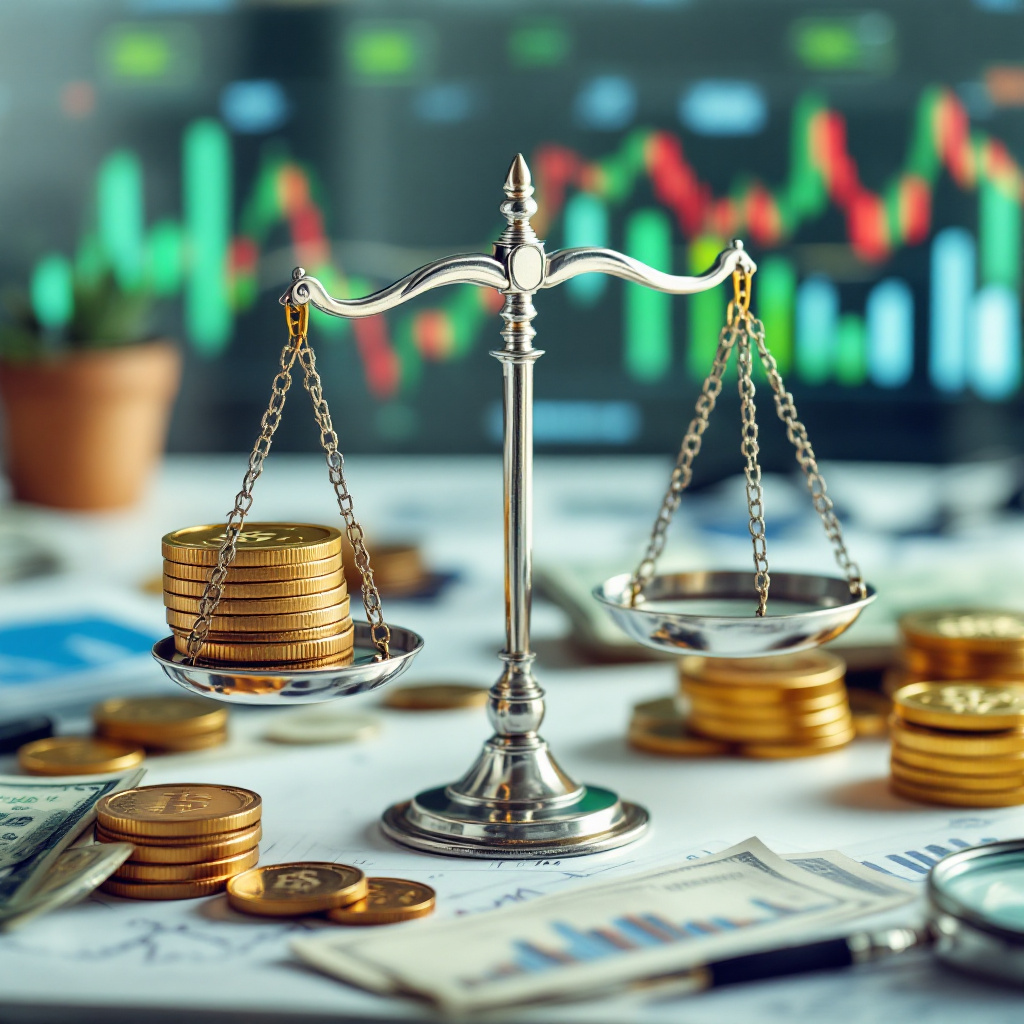Unpacking the Cost Considerations of ETFs: What You Need to Know
Investing in Exchange-Traded Funds (ETFs) is like dipping your toes into an ocean of potential returns and risks. Before getting swept away by the promises of diversification and liquidity, savvy investors need to pause and think about the often-overlooked costs involved. These can quietly nibble away at your returns if you’re not watchful. In this deep dive, we’ll unravel the cost considerations of ETFs, exploring expense ratios, brokerage fees, and tax implications. Let’s set sail on this financial journey to shed light on how these factors can influence your investment strategy.
What Are Expense Ratios?
When you invest in an ETF, you’re not just acquiring a basket of assets, but also paying for the fund’s maintenance. This comes in the form of the expense ratio. Think of it as the managerial fee that covers the operating costs of the ETF, including the manager’s salary, administrative costs, and other necessary expenses.
The expense ratio is expressed as an annual percentage of your investment. While this may seem negligible at first glance, let’s crunch some numbers:
- An expense ratio of 0.10% means that for every $1,000 invested, you pay $1 annually.
- A 1% expense ratio, on the other hand, amounts to $10 per year for every $1,000 invested.
So, an apparent difference of just 0.9% doesn’t sound like a lot, does it? Let me tell you, over time, it can add up to a hefty sum! Especially if you’re investing considerable capital or plan to hold your ETF over a long period.

Your Brokerage Fees: The Unseen Cost Culprit
Like the friendly neighborhood barista who expects a tip, brokers facilitating your ETF transactions also have their own costs. These brokerage fees can vary widely depending on the brokerage firm and the services they offer. Typically, they fall into categories such as trading commissions or account fees.
You might think, Hey, some brokerage firms advertise commission-free trades. Isn’t that too good to be true? Well, some brokerages do indeed offer zero-commission trades, but watch out for hidden fees. They may sneak in through the backdoor in the form of:
- Account maintenance fees
- Inactivity fees
- Withdrawal or transfer fees
Don’t get blindsided by these sneaky charges! Review your broker’s fee schedule meticulously to keep your investment train on track.
The Tax Implications: Paying Uncle Sam
Ah, taxes—perhaps the most dreaded word in an investor’s vocabulary. When it comes to ETFs, the tax man also wants his piece of the pie, and understanding the tax implications is crucial for any serious investor.
While ETFs are generally touted for their tax efficiency compared to mutual funds, they aren’t entirely tax-free. You can expect taxes on:
- Capital gains: ETFs might trigger a capital gains tax. While ETFs are efficient with in-kind creations and redemptions, any sales by the fund manager as part of rebalancing will have tax consequences for shareholders.
- Dividends: If your ETF pays dividends, expect taxes on those as well. The rate can depend on whether the dividends are classified as qualified or ordinary.
Being prudent about the tax structure of your ETF holdings and the implications for your personal situation can help minimize Uncle Sam’s impact on your bottom line.
The Hidden Costs of Spreads and Liquidity
Next to expense ratios and brokerage fees, savvy investors must consider spreads and liquidity costs. These often fall under the radar but can impact your total ownership cost.
The spread—the difference between the bid and ask price of an ETF—is a transaction cost that reflects the ETF’s liquidity. Simply put, more popular ETFs with higher trading volumes tend to have narrower spreads, thus lower costs. Conversely, thinly traded ETFs sport wider spreads, eating more into your investment.
This might prompt the question, How do I minimize this potential pitfall? Well, staying vigilant and choosing ETFs with higher liquidity can help reduce the bite of spread-related costs.
Real-World Cost Example: Putting It All Together
Imagine you invest $10,000 in an ETF with a 0.20% expense ratio. Due to recent trends, your brokerage has graciously waived all trading commissions, leaving you to consider only the impact of the expense ratio and taxes.
Over a decade, say your ETF grows at an average annual return of 7% before costs. Let’s see how the numbers pan out:
- Pre-Cost Value: Without any fees, your portfolio grows to approximately $19,671 over 10 years.
- Post-Cost Value: With a 0.20% annual expense ratio, your portfolio hits around $19,331, shaving some $340 off your returns.
- Tax Considerations: Depending on capital gains and dividend tax rates applicable, you’ll need to factor in additional costs which vary individually.
Ultimately, keeping these cost considerations of ETFs at the forefront ensures you aren’t blindsided by unexpected financial surprises. Strategize based on your personal financial goals, investment horizon, and risk tolerance to tailor the cost-benefit balance in your favor.
Conclusion: The Compass to Your ETF Journey
Investing in ETFs is akin to navigating a sea of potential and pitfalls. While it’s thrilling to chase after those glittering promises of returns, staying anchored and acknowledging the cost considerations of ETFs is indispensable. From expense ratios to brokerage fees, and all the way through to tax implications and spreads, each plays its part in defining your net returns. Being an informed and vigilant investor is your best defense against cost drifts and unanticipated financial squalls. So, arm yourself with knowledge, chart your course mindfully, and enjoy the voyage of ETF investing with fewer worries to weigh you down.
FAQs: Understanding the Nuances of ETF Costs
What are the costs involved in an ETF?
Beyond the expense ratio, which covers an ETF’s total annual operating expenses, other costs might include brokerage fees like trading commissions, and account fees. Don’t forget about tax implications, especially if your ETF generates taxable dividends or triggers capital gains distributions.
What is the cost basis of an ETF?
An investor’s cost basis in ETF shares is generally what they paid for those shares, plus any associated sales commissions. If shares are received as a gift or inheritance, different calculation rules apply. The basis will also increase if taxable dividends are reinvested to purchase additional shares.
What is the holding cost of an ETF?
The holding cost, primarily represented by the expense ratio, is the annual rate charged by the fund to cover portfolio management, administration, and other necessary costs. This charge is set by the fund itself, not any intermediaries that might be involved in the transaction process.
Can ETFs have hidden fees?
While ETFs are generally known for transparency, some costs might be hidden in plain sight. These can include bid-ask spreads, especially in less liquid ETFs, as well as any account maintenance or inactivity fees imposed by your brokerage. Always scrutinize the fine print to uncover these potential hidden costs.
How do expense ratios affect my returns?
Expense ratios reduce the starting value of your investment by a small percentage each year. For example, a 1% expense ratio reduces the annual growth of your ETF by 1%, representing a direct charge from your overall returns. Over time, seemingly small differences in expense ratios can lead to substantial variations in overall returns.

